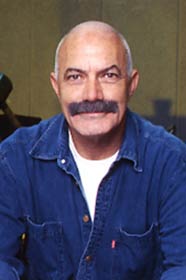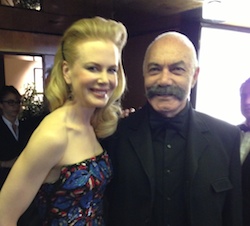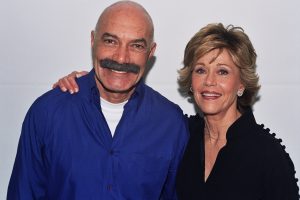Blast from the Past: Best Horror Films Ever Made
Eyes Without a Face (French: “Les Yeux sans visage”) is now widely-recognized as one of the greatest, most influential horror films ever made, but initial response to Georges Franju’s 1960 feature was not entirely positive.
Grade: A (***** out of *****)
Based on a novel of the same name by French author Jean Redon, the film revolves around a plastic surgeon determined to perform face transplant on his daughter, who was disfigured in a car crash.
An international co-production between France’s Champs-Élysées Productions and Italy’s Lux Film, Eyes Without a Face stars French Pierre Brasseur, Italian Alida Valli, Juliette Mayniel, and Édith Scob.
The black-and-white movie was shot in Paris and its surroundings suburbs, and at Boulogne Studios.
During production, consideration was given to the European censors standards by minimizing the gore.
Even though Eyes Without a Face was cleared by censors, its release in Europe caused controversy, and critical reaction ranged from praise to disgust.
However, subsequent theatrical and home video re-releases improved its reputation. Modern critics of the 1970s have praised Eyes Without a Face for its poetic approach to horror, as well as its influence on many filmmakers.
The tale begins 0utside Paris, when a woman dumps a corpse in the river, which is identified by Dr. Génessier as his daughter Christiane; the girl was reported missing after an automobile crash disfigured her face.
In reality, Christiane still lives in Dr. Génessier’s mansion next to his private clinic, which is guarded by German Shepherds. The body, which was disposed of by his assistant Louise (Valli), belongs to a young woman whose face skin Dr. Génessier had removed in hs attempt to graft onto his daughter.
For most of the film, Christiane (Édith Scob) is wearing a white featureless mask to cover her face, which is hidden behind a face-like mask.
Génessier’s next victim, Edna Grüber, sedated in preparation for her surgery, is secretly watched by Christiane. The heavily bandaged and faceless Edna attempts to escape but falls to her death from a window.
After disposing of Edna’s corpse, Génessier notices the new tissue is rejected within days and Christiane has to wear the mask again.
Jacques informs the police, who have been investigating the disappearance of young women with similar facial characteristics. Inspector Parot instructs Paulette Mérodon (recently arrested for shoplifting) to check herself into Génessier’s clinic. Soon after, Paulette is picked up by Louise and delivered to Dr. Génessier, but the police arrive before he begins surgery on her.
Christiane, disenchanted with her father’s immoral experiments, and slowly losing her mind from guilt and isolation, decides to act. She frees Paulette, murders Louise, and frees the dogs and doves used by her father for his experiments.
Dr. Génessier dismisses the police and returns to his lab. A newly acquired German Shepherd attacks him, inciting the other dogs to maul him to death.
In the end, Christiane, unmoved by his death, strolls out into the woods with a dove in her hands.
The writers had changed the novel’s focus from Doctor Génessier’s character to that of his daughter, Christiane, a shift that revealed the doctor in a more positive and understandable light, and also helped in dealing with the censorship restrictions.
The film’s ominous score relies on two imposing musical themes, a jaunty carnivalesque waltz played while Louise picks up young women for Génessier, and a lighter, sadder piece for Christiane.
Noted actor Brasseur had previously worked with director Franju in the drama, La Tête contre les murs (1958), again playing a doctor.
Like Brasseur, Scob was also cast by Franju in La Tête contre les murs, in a minor role, but later worked with Franju on four other films.
Cast
Pierre Brasseur as Dr. Génessier, a physician and Christiane’s father
Alida Valli as Louise, Dr. Génessier’s assistant
Juliette Mayniel as Edna Grüber
Alexandre Rignault as Inspector Parot
Béatrice Altariba as Paulette Mérodon
François Guérin as Jacques Vernon
Édith Scob as Christiane Génessier, Doctor Génessier’s daughter
Credits:
Directed by Georges Franju
Written by Boileau-Narcejac, Jean Redon, Claude Sautet, Pierre Gascar, based on “Les Yeux sans visage,” 1959 novel by Jean Redon
Produced by Jules Borkon
Cinematography: Eugen Schüfftan
Edited by Gilbert Natot
Music by Maurice Jarre
Production companies: Champs-Élysées Productions; Lux Film
Distributed by Lux Compagnie Cinématographique de France
Release dates: March 2, 1960 (France)
Running time: 90 minutes











